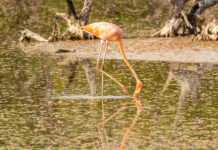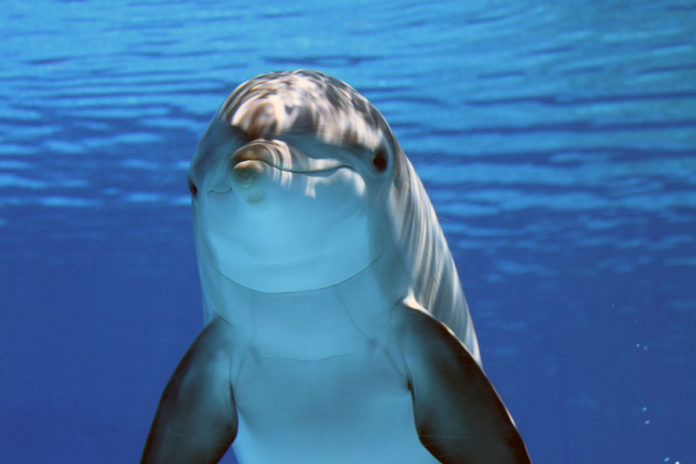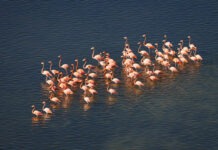Buckle up, folks. This one might get a little awkward, but I promise you, there’s a point.
Before I became a newspaper editor, I spent the first six and a half years of my career pursuing a lifelong dream of being a dolphin trainer. Now, there aren’t many who make this professional U-turn, probably because a.) it’s not even remotely natural, and b.) it’s a seismic enough career shift that when you move from one to the other, almost all of your professional knowledge is instantly useless. But once in a while, the stories floating around in your brain serve a purpose. What follows is me seizing one of those rare opportunities.
It’s no secret that my former flippered coworkers are one of the few species that enjoy getting their freak on for fun. And before you show me YouTube clips of these animals trying to get frisky with humans, I can tell you it’s an exceedingly rare occurrence.
But with each other? It’s a whole different ball game. The sexual creativity of a bottlenose dolphin can be nothing short of impressive. Boys, girls, inanimate objects…from their lagoon mates to fences, cinder blocks and PVC pipes, everything is fair game at times. And it’s not just during a certain “breeding season.” Dolphins are observed getting busy year-round, regardless of whether females are receptive to getting pregnant and having babies.
How do we know? As someone who earned a paycheck caring for them, let me tell you that a receptive female dolphin is a sight to behold – and can give you a heart attack if you don’t know what you’re looking at. Their eyes close, they roll on their sides or their bellies, and they float motionlessly on the surface of the water, so much so that my coworkers and I used to jokingly call the pose “dead dolphin.”
While it certainly looks like they’re having a grand old time, it turns out science can even back me up.
Patricia Brennan is a biologist based at Mount Holyoke College in South Hadley, Massachusetts who’s made an entire career out of studying animal genitalia. The next part is for the biology nerds out there, so if you want the details, read on. And if you don’t, that’s completely understandable. Go ahead and skip to the last two paragraphs.
Brennan’s recent research and collaborations focus on dolphins’ lady parts, which she describes as “very complicated” in an interview with New Scientist magazine. When dissecting and studying these organs, one part in particular stood out. “I would look at these clitorises and be just amazed,” Brennan told New Scientist. “I was like, ‘Oh my gosh, these are pretty big and well-developed.’”
With dolphins seizing every opportunity for sexy recreation, it stands to reason that their physiology would step in and do them a solid.
Brennan’s discoveries didn’t stop at just the size of the clitoris. She reported being “shocked” by how big the nerves in the tissue were, some of which had free nerve endings just underneath the skin that are known to increase sensitivity. She found erectile tissue that fills up with blood, just like in humans, and even discovered that the skin in the area itself is only about one third of the thickness of the skin around it.
“Once we put all of those things together, we were pretty certain that this is functioning in pleasure, just like in humans,” Brennan told New Scientist. “It’s basically providing the morphological evidence that we need to close that case and say yes, this is what a functional clitoris looks like.”
Brennan has several critics who view her work as controversial or uncomfortable, but to her, it’s just “basic science” in an area that’s sorely lacking exploration. “This neglect in the study of female sexuality has left us with an incomplete picture of the true nature of sexual behaviors,” Brennan said in a news release. “Studying and understanding sexual behaviors in nature is a fundamental part of understanding the animal experience.”
Welcome back, you non-bio nerds. The TL;DR (too long;didn’t read) version of everything above is: research shows that dolphins have a fully stocked toolbox to enjoy themselves while getting it on.
I say everything above to say this: deriving pleasure from getting busy has apparently been in style with Mother Nature for millions of years. And when it comes to having a good time, whether you’re a dolphin or a human, she’s glad to step in and lend a hand.
























